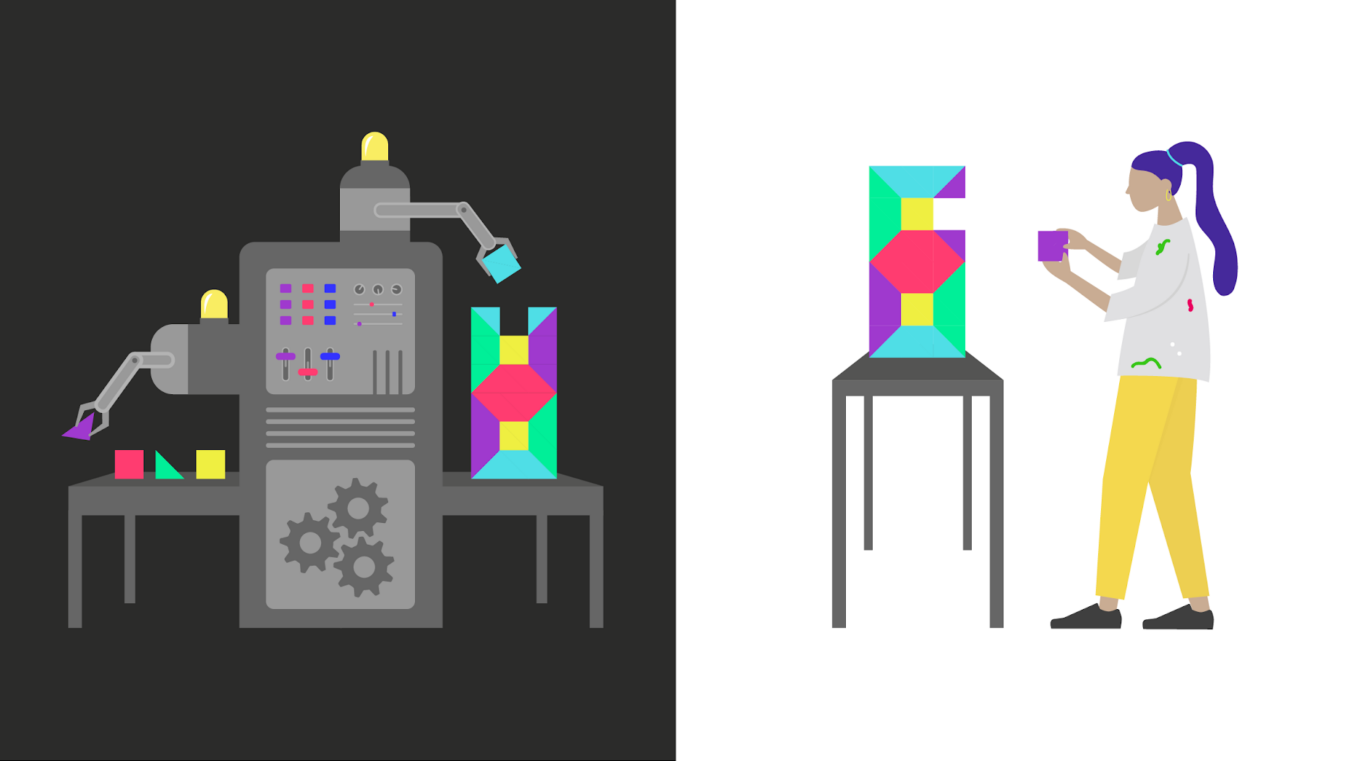Have you ever wondered if a computer will take your job? You’re not alone. Automation anxiety has become widespread. Despite a steadily increasing employment rate, public perception about AI entering the workplace provokes a great deal of apprehension. In 2017, the Pew Center found that 72% of Americans reported being fearful about the impact of automation on jobs. Imagine that figure now.
When discussions about AI in the workforce began, it was limited to manual work. The conversation then moved to technical roles, and now, creatives are beginning to sweat. But let’s examine a realistic depiction of this new world.
Creative tasks versus conception
While existing AI devices can make art, determining whether they’ll replace human creativity is another topic entirely. Computers can measure patterns, hold a wealth of information, and, at times, even predict behavior based on that data. Still, they can’t truly understand why these components align. As Andreas Pfeiffer, President of Pfeiffer Consulting, puts it, “Creativity is not just about what you create, but why you create it.”
Think about it like this. An interior design software can excel at taking accurate measurements, rendering an image of a space, and perhaps even choosing items based on current trends and past consumer behavior. However, designing a room where the furniture, carpet, and fabrics collectively resonate with a client is simply too human for a computer to predict.
Likewise, McKinsey has been studying the type of work most compatible with automation. They’ve found that the more technical a task, the more apt technology is at accomplishing it. Meanwhile, the more imaginative, creative, and strategic it is, the more challenging to automate.
The McKinsey report claims that the hardest activities to automate using current technology include team management and development, with only a 9% automation potential. The runner-up is professions entailing decision-making, planning, or creative work (18% potential). So although AI can optimize, organize, and repeat, it’s far from profoundly understanding consumers.
As such, it seems that matters which we struggle to quantify are more difficult to automate. For instance, why do some individuals respond better to certain management styles? Categorizing personality traits can be a helpful predictor, yet there are still a lot of intangible components. A computer cannot detect a variety of nuances, such as daily mood fluctuations, personal growth, etc.
Room to grow
Ultimately, you can rest easy knowing that AI limitations in consciousness and empathy still hinder it from fulfilling the daily tasks of a creative professional. Luckily, many are aware of this. In a 2018 Adobe report, more than half of the respondents in the creative field were actually eager to learn how AI can facilitate.
Chris Duffey, senior manager of AI strategic development at Adobe, commented on this sentiment in CMO.com interview, saying, “Today they realize that AI is in much of the technology they’re already using, and it’s making things more intuitive than previously perceived.”
Creative AI isn’t taking creative roles any time soon — it’s just making them a lot less cumbersome. In fact, this technology might even create more jobs. The CEO and founder of Fetch Robotics, Melonee Wise, believes, “For every robot we put in the world, you have to have someone maintaining it or servicing it or taking care of it.”
A new age of creativity
People are masters of creative endeavors because they signify how we relate to the mutual experience of being human. By incorporating AI technology into creative tasks we provide more room for ideation to flourish.
The convergence of creativity and technology marks a new era, one in which man is no longer distracted by the tedious. One in which technology supports art. It’s highly improbable that robots will become creative directors or world-renowned artists. Rather, expect to see new methods and mediums for human expression.
Want to learn more about the future of Creative AI? See what industry leaders have to say.

